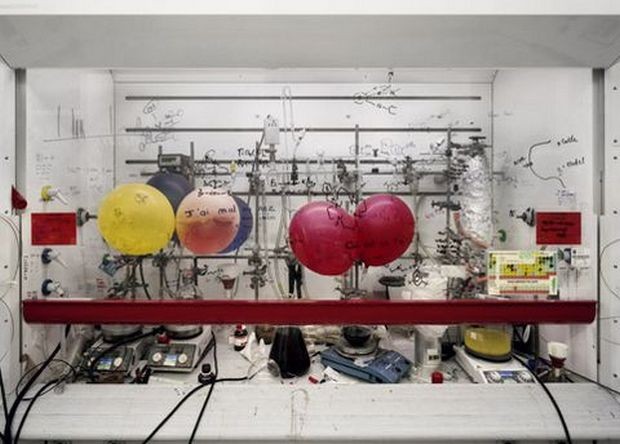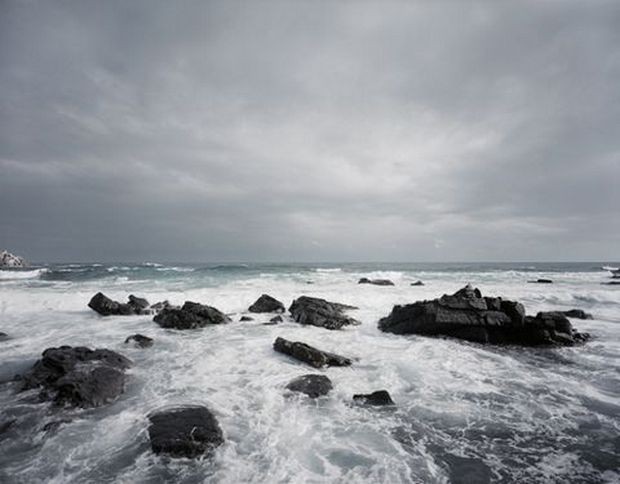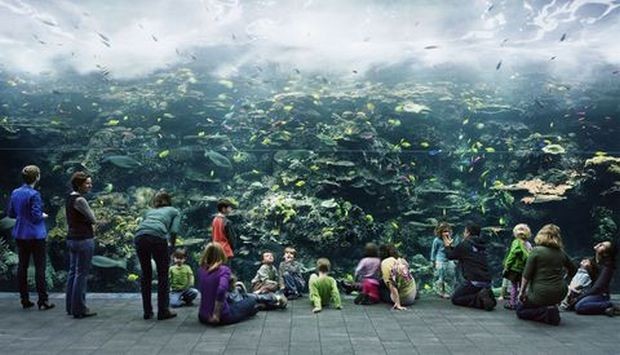Thomas Struth.
Nature & Politics
04 Mar - 29 May 2016
THOMAS STRUTH
Nature & Politics
4 March – 29 May 2016
Whether research institutions, a theme park, or sacred spaces: in recent years, Thomas Struth has photographed an astonishing variety of locations. Apart from being forged by human hands, these locations all share one overriding similarity: they are extremely complex, albeit fulfilling entirely different functions.
This detached curiosity is also evident in pictures of production plants, laboratories, and operating theatres. Here technology is entirely visible, yet the actual function it performs remains concealed. Furthermore, these photographs feature apparatuses and constructions that more often than not are kept out of public view. Struth has used bold colours and large formats in his prints of these images. However, he also shows an interest for the ideas that underlie the objects’ cables, wires, and plastic casing.
The pictures are surely testament to the strength of humankind’s imaginative and technical capacities. However, Struth’s works also show how technology and technological progress can place excessive demands upon us. Only a select few, after all, are able to work these machines. Nevertheless, while a high degree of expertise is required to operate these levers and tubes, it is still possible to be in awe of the tremendous accomplishments of those who built them.
Thomas Struth (born 1954) ranks internationally among the most important artists of his generation. During the 1970s he was a student at the Kunstakadamie Düsseldorf, where he first studied painting under Gerhard Richter, and later photography under Bernd and Hilla Becher. Together with fellow Becher alumni, including Andreas Gursky, Thomas Ruff, and Candida Höfer, he formed the so-called Düsseldorf School. Struth’s work draws attention to contemporary structures, which he documents and examines with tremendous clarity and eye for detail. His photographs of landscapes, streetscapes, and even museum visitors, might easily be interpreted as scientific studies that seek to map networks of historical, functional, and social interrelationships.
The exhibition will subsequently go on show at the Martin-Gropius-Bau, Berlin, at the High Museum of Art, Atlanta/GA, and at the Saint Louis Art Museum, St. Louis/MO.
Nature & Politics
4 March – 29 May 2016
Whether research institutions, a theme park, or sacred spaces: in recent years, Thomas Struth has photographed an astonishing variety of locations. Apart from being forged by human hands, these locations all share one overriding similarity: they are extremely complex, albeit fulfilling entirely different functions.
This detached curiosity is also evident in pictures of production plants, laboratories, and operating theatres. Here technology is entirely visible, yet the actual function it performs remains concealed. Furthermore, these photographs feature apparatuses and constructions that more often than not are kept out of public view. Struth has used bold colours and large formats in his prints of these images. However, he also shows an interest for the ideas that underlie the objects’ cables, wires, and plastic casing.
The pictures are surely testament to the strength of humankind’s imaginative and technical capacities. However, Struth’s works also show how technology and technological progress can place excessive demands upon us. Only a select few, after all, are able to work these machines. Nevertheless, while a high degree of expertise is required to operate these levers and tubes, it is still possible to be in awe of the tremendous accomplishments of those who built them.
Thomas Struth (born 1954) ranks internationally among the most important artists of his generation. During the 1970s he was a student at the Kunstakadamie Düsseldorf, where he first studied painting under Gerhard Richter, and later photography under Bernd and Hilla Becher. Together with fellow Becher alumni, including Andreas Gursky, Thomas Ruff, and Candida Höfer, he formed the so-called Düsseldorf School. Struth’s work draws attention to contemporary structures, which he documents and examines with tremendous clarity and eye for detail. His photographs of landscapes, streetscapes, and even museum visitors, might easily be interpreted as scientific studies that seek to map networks of historical, functional, and social interrelationships.
The exhibition will subsequently go on show at the Martin-Gropius-Bau, Berlin, at the High Museum of Art, Atlanta/GA, and at the Saint Louis Art Museum, St. Louis/MO.



